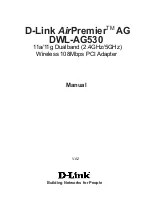
User’s Guide Hammerfall DSP MADI
© RME
19
10.2 Clock Modes - Synchronization
AutoSync
The HDSP MADI has been equipped with
AutoSync
, an automatic clock source selection,
which adopts the first available input with a valid digital signal as the clock reference input. The
input currently used as sync reference is shown in the
AutoSync Ref
status field, together with
its sample frequency.
AutoSync guarantees that normal record and record-while-play will always work correctly. In
certain cases however,
AutoSync may cause feedback in the digital carrier, so synchronization
breaks down. To remedy this, switch the HDSP’s clock mode over to 'Master'.
Via
Pref. Sync Ref
(preferred
synchronization reference) a preferred
input can be defined. As long as the
card sees a valid signal there, this
input will be designated as the sync
source, otherwise the other inputs will
be scanned in turn. If none of the
inputs are receiving a valid signal, the
card automatically switches clock
mode to ‘Master’.
Thanks to its AutoSync technique and
lightning fast PLLs, the HDSP is not
only capable of handling standard
frequencies, but also any sample rate
between 25 and 200 kHz. Even the
word clock input, most often used in
varispeed operation, allows any
frequency between 25 kHz and 200
kHz.
The HDSP MADI's outstanding clock
control allows for a synchronization of
the output signal to the input signal not
only at identical sample rates, but also
at half, quarter, double and quad
sample rates. A playback of 192 kHz can easily be synchronized via a 48 kHz clock source.
SyncCheck
If several digital devices are to be used simultaneously in a system, they not only have to
operate with the same sample frequency but also be synchronous with each other. This is why
digital systems always need a single device defined as ‘master’, which sends the same clock
signal to all the other (‘slave’) devices. RME’s exclusive
SyncCheck
technology (first
implemented in the Hammerfall) enables an easy to use check and display of the current clock
status. The ‘SyncCheck’ field indicates whether no signal (‘No Lock’), a valid signal (‘Lock’) or a
valid
and
synchronous signal (‘Sync’) is present at each of the digital clock source inputs. The
‘AutoSync Ref’ display shows the current sync source and the measured frequency.
In practice, SyncCheck provides the user with an easy way of checking whether all digital
devices connected to the system are properly configured. With SyncCheck, finally anyone can
master this common source of error, previously one of the most complex issues in the digital
studio world.
















































